
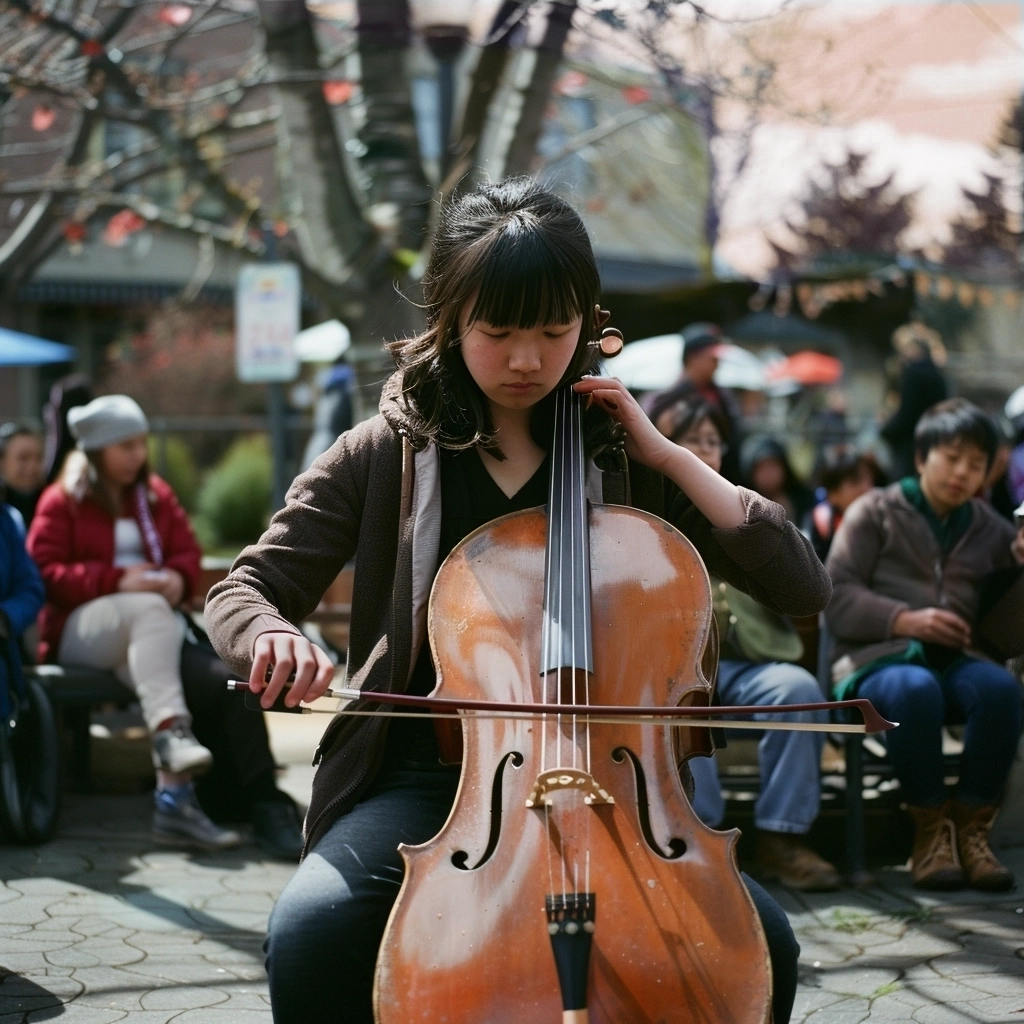
Before Nanako began to play at noon, a momentous clang rang out from the Willey Clock Tower. Iris and I looked at each other and then found Officer Ron standing near the crowd. Then the three of us quickly made our way to the base of the abandoned tower…
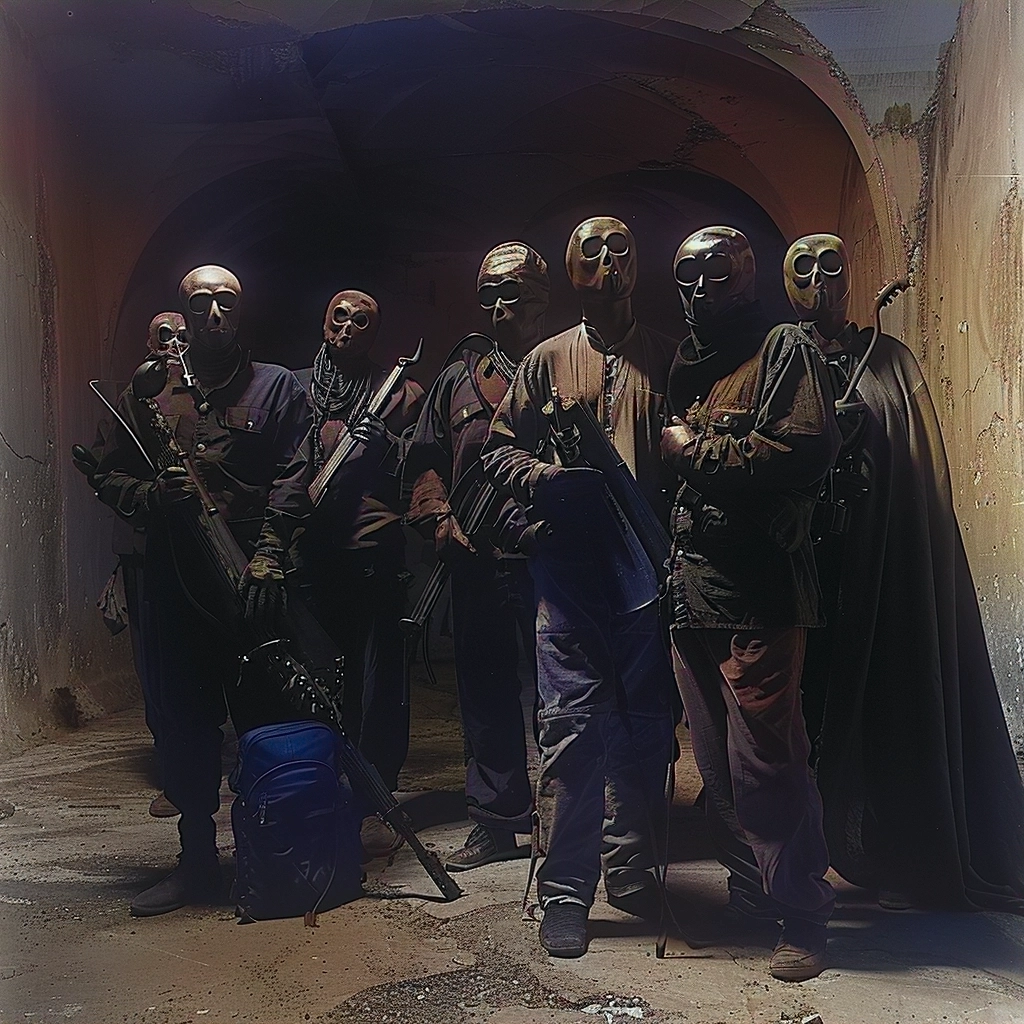
Once inside we quickly found ourselves surrounded by several horrifying-looking members of the Order of the Arranger. They disarmed Officer Ron and then dragged all three of us down the hidden corridor of the clock tower. I saw that one of the members was holding my backpack.

I turned and saw the magnificent pipe organ had been repaired and in place of the many broken pipes was an instrument built of human bones. Officer Ron seemed like he might faint. Even I felt the room begin to spin as someone began laughing behind us…

Standing in the very center of the room was Gerald Ames who grinned as he approached us. “Now you shall come face to face with the Arranger himself. Prepare to kneel as he approaches. Behold the Arranger…”
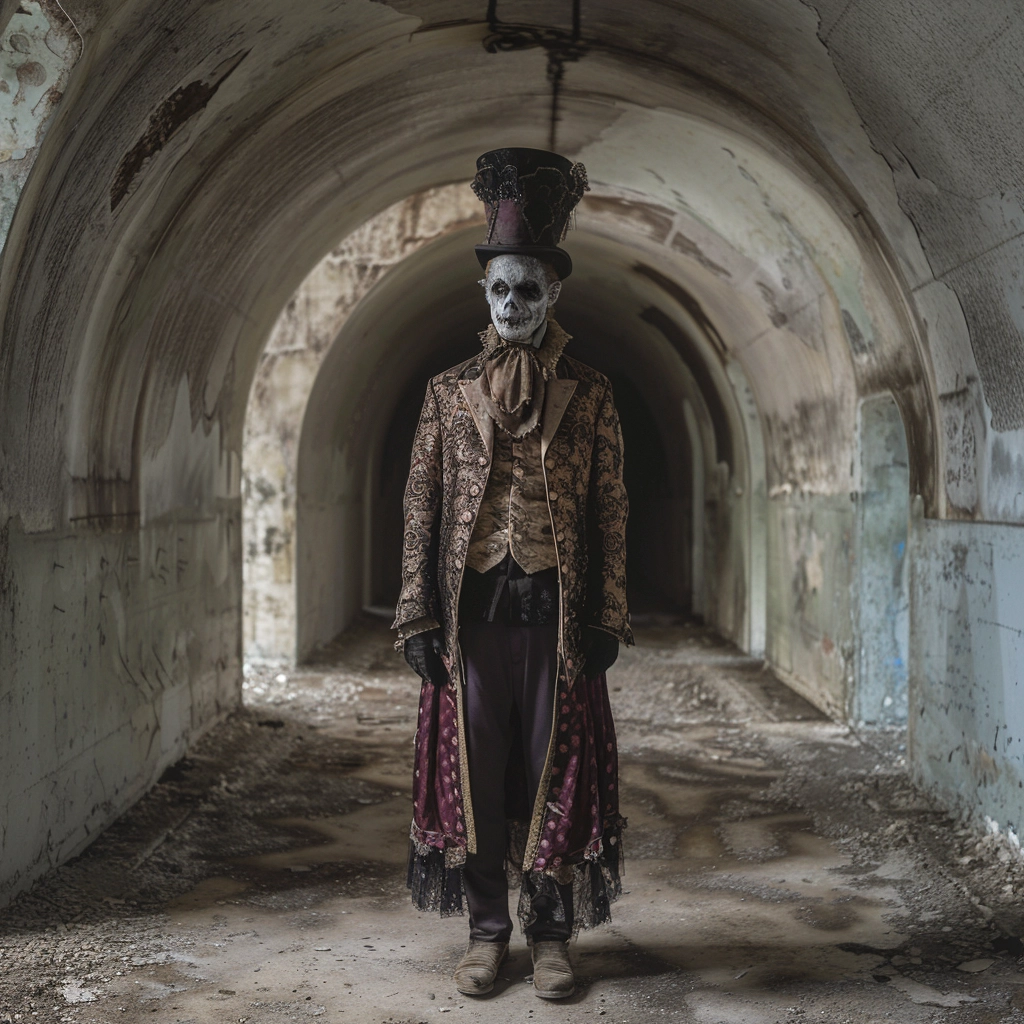
One of the Order members forced us to our knees. I looked up and saw a strange-looking figure with a decrepit face, and all at once knew it must be Lawrence Ames. Somehow the Order had used the organ to stop Time and bring him back to life!

Lawrence Ames walked over to the newly-rebuilt organ and, from the pocket of his robe, he removed the music for the final song and slowly began to play. But the music sounded different and I realized he must have been playing it backwards, one terrifying note at a time.

Each frightening note reverberated across town, rising from the Willey smokestacks. The clocktower began to shake and some of the members of the Order fled. One of the walls of the tower began to topple and I looked over at Iris and Officer Ron and we all ran as fast as we could toward the light.

Outside the sky had turned blood red and an ominous ring loomed overhead. Another dreadful note resounded from the smokestacks as Time seemed to rupture all around us. The trees began to shrink and wither as birds fell from the sky, losing their feathers.

An enormous chasm formed in the center of town. Part of the bandstand fell into the hole and I watched as Nanako nearly slipped inside but her father quickly grabbed her and got her to safety. Several of the other onlookers weren’t so lucky. That’s when I saw the Mayor.

The Mayor had fallen into the chasm and was desperately trying to climb out. Then I watched as Gerald Ames made his way from the clock tower. He seemed uncertain, looking at the ruined town square and the enormous chasm before him. There was no joy on his face, only fear.

Gerald ran towards the Mayor and dragged her out of the hole. I saw Gerald holding the Mayor tenderly and thought of Reginald Willey’s letter, and what he called the unpredictably complex music inside each of us.
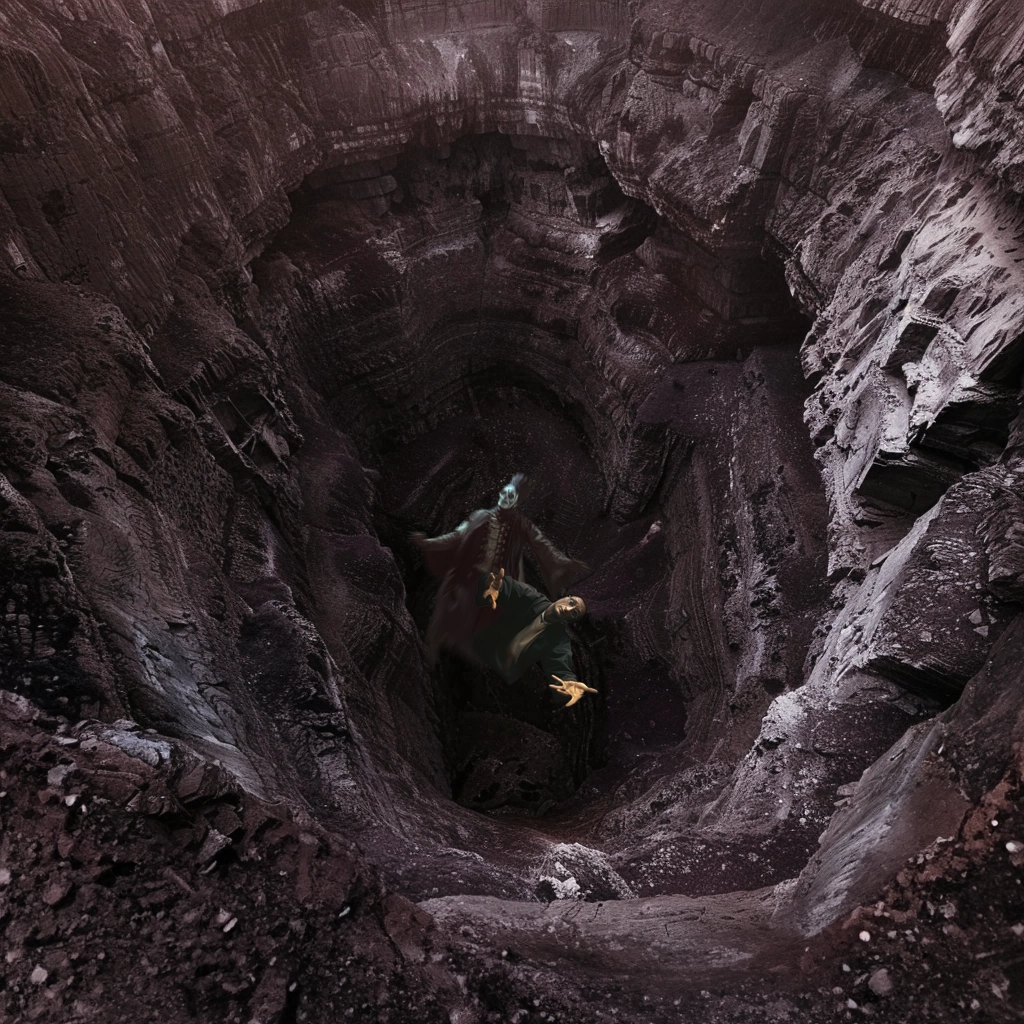
Lawrence Ames appeared and muttered, “From now on, the past will be our future. All others must perish.” Gerald looked at Lawrence Ames and then to where the Mayor was kneeling. Then Gerald got to his feet and ran at the skeletal figure and they both toppled into the chasm.

I ran back inside the clock tower and glanced at the music. I played the invisible song and ran out and watched as the clock tower fell into the chasm. The debris knocked me to the ground and Officer Ron helped me to my feet as the gigantic hole only seemed to get wider.

In Question Mark, Ohio, at the intersection of Main and Chestnut Streets, stands a familiar sight: a beautiful though derelict clocktower, constructed by Reginald Willey, industrialist and town founder.
The story of the clocktower is the story of the Willey family and its relevance to the town of Question Mark.
The Beginnings
The Willey family has a long history in Question Mark. Reginald Willey founded Willey Envelope in 1851 and expanded the family business throughout the 19th-century. In 1884, several years before his death, Willey constructed an 82-foot tower with four illuminated clocks on each side. As fascinated as Willey was with the concept of time, his hope was that the clocktower would provide town residents a moment to pause and to consider the fleeting joys of the ordinary world, before hurrying on their way.
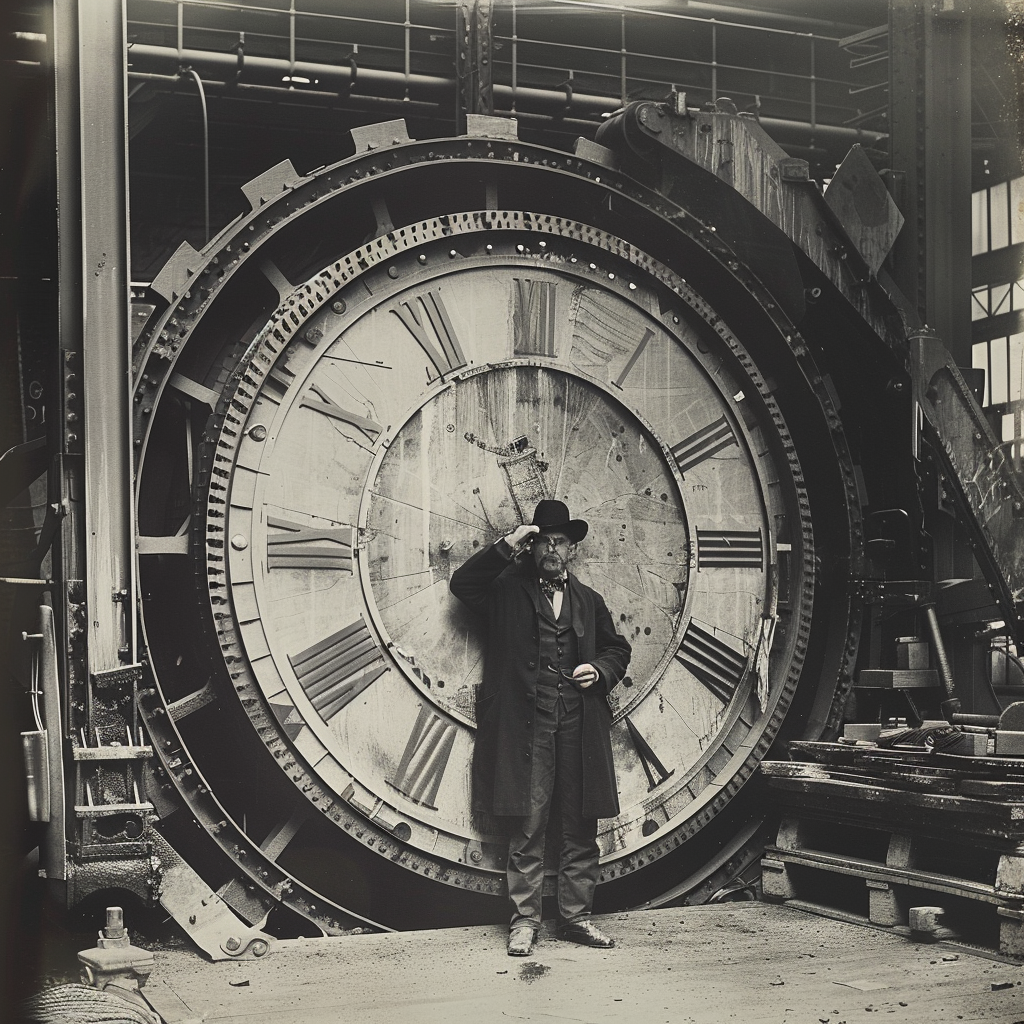
Reginald Willey inspecting one of the clock faces.
In 1921, a fire destroyed much of Question Mark, and only the clocktower was spared. In 1934, another blaze consumed parts of town and once again the clocktower was one of the few landmarks that remained standing.

The 1921 fire that decimated Question Mark.
The Fountain
Few residents know that next to the clocktower is a public water fountain dedicated to Rebecca Willey. Born in 1857, Rebecca Dupree married Reginald Willey Jr. and became a strong proponent for immigrant’s and women’s rights. She was the first woman elected to the Question Mark School Board in 1885 and later helped her husband found the town’s first public library. She also started the Children’s Music and Painting Circle to ensure that all children knew how to play music and paint as she believed both were essential skills to the development of an informed citizenry.

The Rebecca Willey Memorial Fountain.
The water fountain was built after the death of Rebecca Willey in 1936. It was said to be the one place in town Willey heir and Rebecca Willey’s son Reginald Jr. Jr. would most often visit as a place for quiet contemplation as he took on the enormous responsibility of running the Willey Envelope factory during the Great Depression and working to ensure a future for the town of Question Mark.
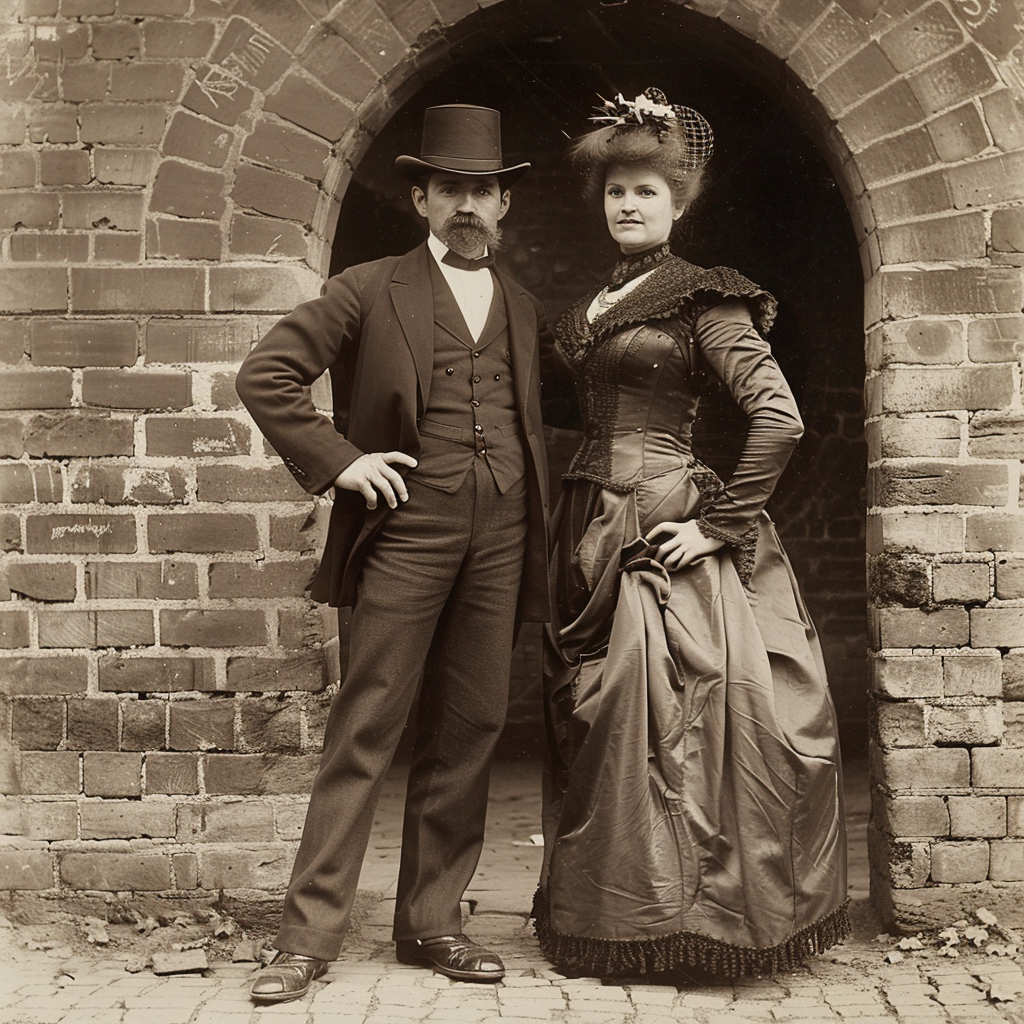
Reginald Jr. and Rebecca visit the Clocktower.
Jr. Jr. Takes Over
In 1948, a powerful tornado made its way through town and split the clocktower in two. Willey Jr. Jr. used his vast wealth and resources to reconstruct the tower using many of the original elements, while also introducing several new kinds of gears and additional machinery meant to last throughout the next century. When the completely refurbished clocktower was inaugurated in 1953, Reginald Willey Jr. Jr. praised the vision of his grandfather while also asking the people of Question Mark to look to the future, “where all the important answers always live.”
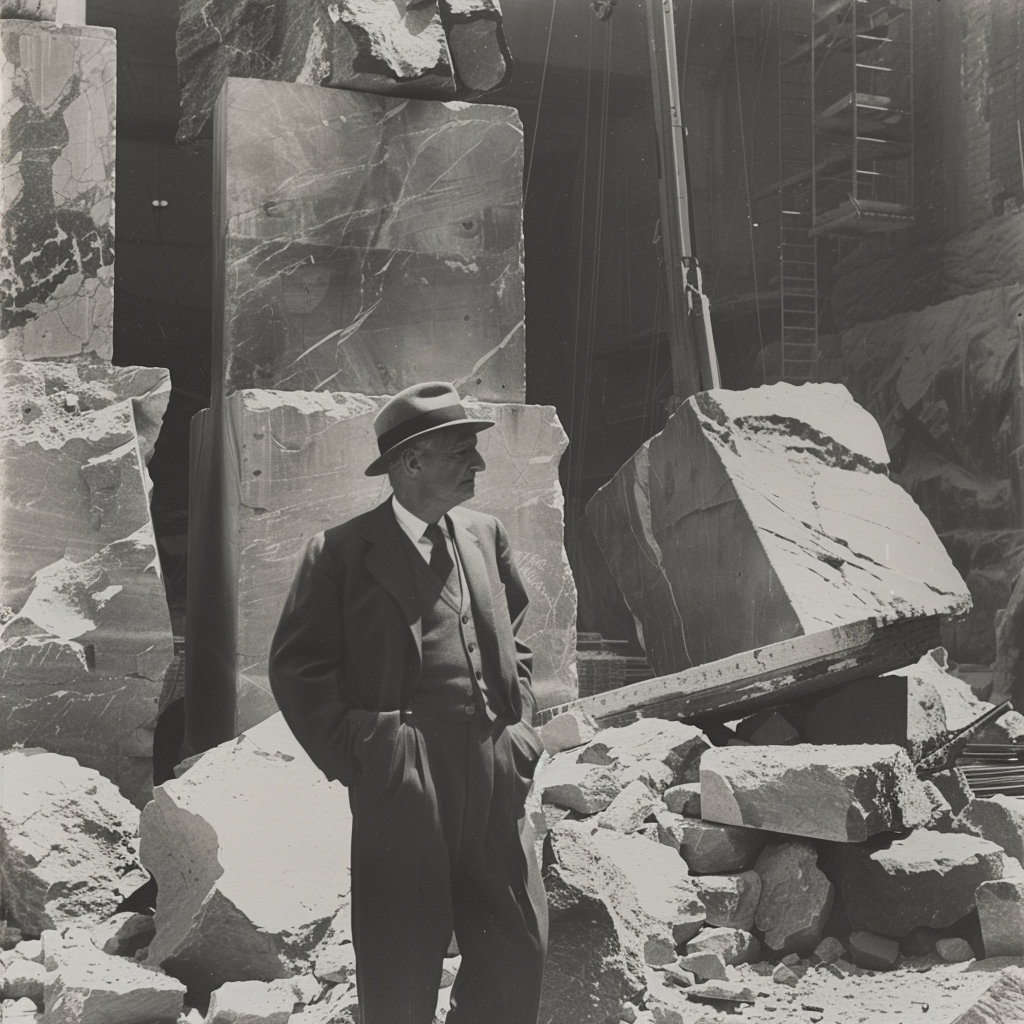
Reginald Jr. Jr. surveys the damage of the clocktower after the 1948 tornado
In addition to updating the clockworks, Willey Jr. Jr. also added a musical sequence, which would ring out during the daylight hours and which many citizens of that era fondly remember. It was said each day began and ended in Question Mark with the clocktower’s short, pleasant melody.
A Willey Split
After the death of Reginald Willey Jr. Jr. in 1961, the clocktower slowly began to fall into disrepair. The controversy surrounding Willey’s final will and the ownership of the envelope factory led to a lengthy legal dispute between sons Royce and Reuben Willey. As the brothers’ legal ensnarement grew, the clocks in the clocktower were said to cease to function, one by one.
In 1979, after a Ohio Supreme Court Ruling that left the ownership of the Willey Envelope factory in the hands of older brother Royce Willey, the two brothers found themselves in the middle of a very public confrontation, right in the shadow of the clocktower their father had worked to rebuild. Several onlookers described Royce and Reuben Willey engaged in a series of insults, which led to some lengthy verbal sparring, and then eventually, fisticuffs, leaving the elder brother holding his eye and cursing his younger brother openly. According to eyewitnesses, the dustup seemed to be over the disappearance of a missing watch which Royce claimed Reuben had stolen. One witness said that Royce warned Reuben: “You will never see a penny from our family’s fortune: you’re a wastrel and a layabout and a discredit to the Willey name. Our grandfather tried to build something here and all you can think to do is use it for your personal gain. You are exactly like Lawrence Ames and all his followers. Is this all Question Mark means to you? If so, I pity you, brother. Truly. I fear from this moment forward, you will carry our family’s name like a curse.”
The Modern Era
The moment seemed to mark a shift in Question Mark itself. From a town brimming with progress and optimism, to one divided by power and greed, the final clock in the clocktower was said to stop functioning that day, the musical gears giving one final melancholy chime.
After the public altercation, Reuben and his family left Question Mark and settled in the Baltimore area, where he died penniless, leaving his wife and two children in dire financial troubles. Royce continued to run the factory until the 1980s when he was forced to sell the family’s ownership of the envelope factory after several ill-conceived business deals. Without the stewardship of the Willey family, the clocktower stopped functioning altogether. The music sequence became a halting, screeching alarm and then fell silent. Eventually, by 1991, the clocks in the clocktower would only ever sporadically work, and were sometimes known to run backwards.
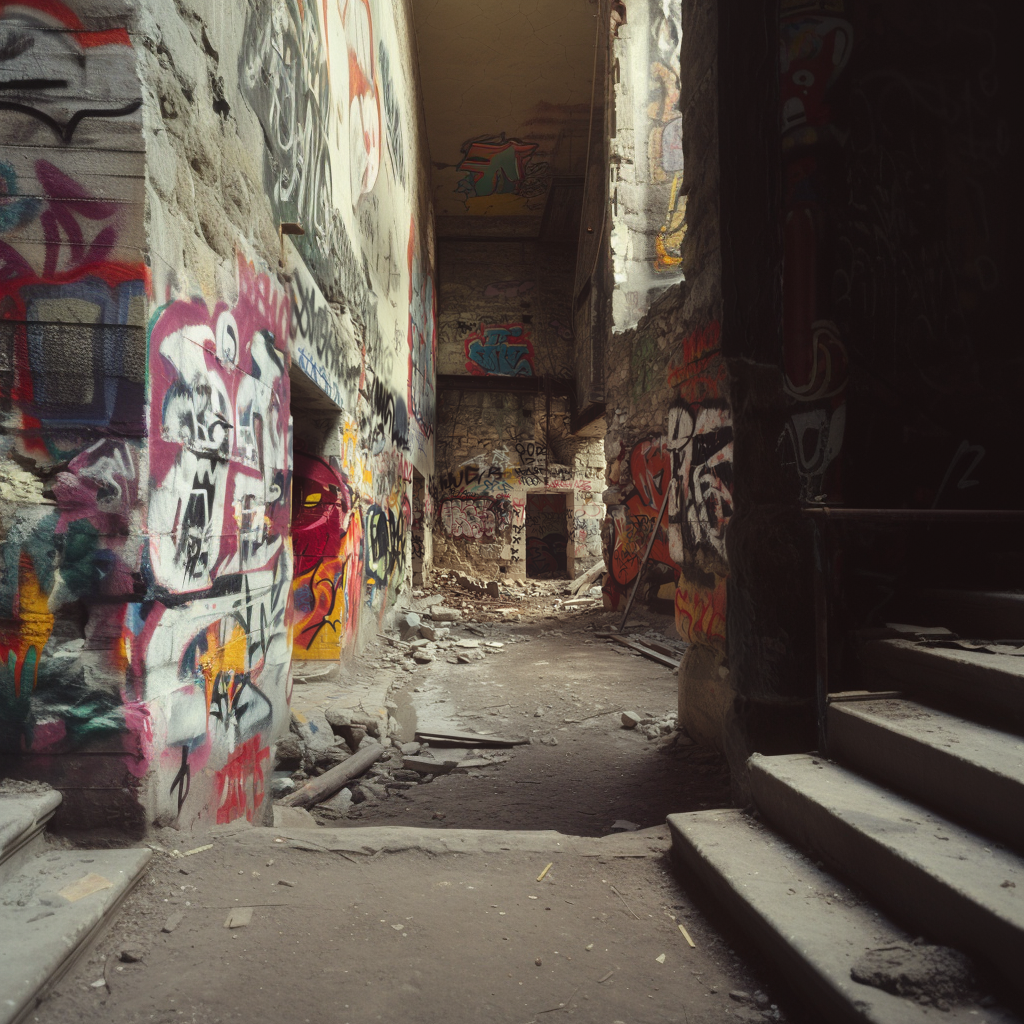
Graffiti covers an inner chamber of the clocktower after years of neglect.
In the 1500s, juvenile delinquents were known to loiter in the upper room of the clocktower. During an reelection campaign in 2017, Mayor Elizabeth Zisk promised to return the clocktower to its stately glory, but unfortunately, that promise was quickly forgotten as soon as the campaign ended.
The Willey clocktower and accompanying fountain are certainly very interesting places to visit but, unfortunately, most citizens seem to know little of the history of either. But it is in the spirit of Question Mark that the tower silently keeps its watch over the town, continuing to hold its wondrous, unknowable secrets.